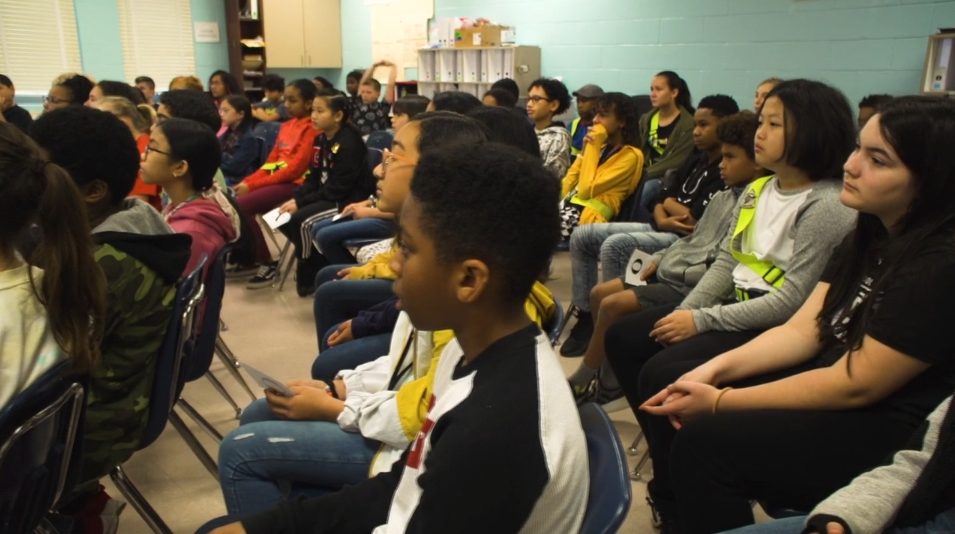Calm Classroom Transforms Mental Health in Duval County Public Schools (Case Study)
Duval County Public Schools is using Calm Classroom to help with student productivity, mental health, and stress management. See what teachers, students, parents, administrators, and other staff members have to say about it!
Video Transcription:
Katrina Taylor, DCPS Director of School Behavioral Health:
I think the number one thing that kids are facing is trauma. And what I mean by that is trauma as it exists within the community, so maybe community violence. It could be trauma for a death of a loved one, trauma for divorced family members, or loss of a girlfriend or a boyfriend. So our kids are facing traumatic experiences and they just don't know how to deal with them.
Narrator:
There are two main programs that lead the prevention efforts. The first, Wellness Wednesdays.
Kristin Shore, Abess Park Principal:
Wellness Wednesday is a new initiative that our county put into place this school year. It is the early dismissal Wednesday every month.
Dr. Dana Kriznar, DCPS Deputy Superintendent:
Every student in every classroom across the district on the same day is receiving a message about mental health or de-stressing techniques, calming techniques, breathing techniques, who to go to if you do need help or if you have a friend that needs help. And they're being made aware of those resources.
Narrator:
The second program is an extremely innovative idea we mentioned earlier called Calm Classroom.
Katrina Taylor:
Calm Classroom is a mindful meditation program. It takes about three to five minutes to implement. What we encourage our schools to do is to utilize Calm Classroom at least three times a day.
Kristin Shore:
Calm Classroom has really been a blessing for our school. I was looking for something to support our students in really being able to transition those emotions when they're upset, when they're angry, when they're very hyped up from something, and we've got to get back to focusing on the academics.
Bill Vasileff, Abess Park Teacher:
Initially, it was rolled out as an enhancer to student productivity. But we found out after implementing the program, that it transitions and translates into all other aspects of life. We've noticed that the kids are able to manage their anger better, they're able to control their emotions. Feel your feet flat on the floor.
Student 1:
Breathe in through your nose and lift your elbows up.
Student 2:
We've done one that's called Energy Hands. And it's pretty much where you move your hands, and then you get to feel the energy between them. So it's where you rub your hands together, and then you take them apart and you can feel the energy in between your hands.
Julie Kendall, Abess Park Mom and Calm Classroom Trainer:
I love the Scribble. There's a drawing Scribble one. And when your eyes are closed, it's based on music.
Calm Classroom exercise narrator:
Keep your attention focused on the sound of the music.
Julie Kendall:
So the music and the type of music changes. But by the time you're done, it's really cool to see the creation that you've made.
Bill Vasileff:
Student reaction is that they actually love it. They love it. The teachers love it. The kids love it. They ask for it.
Student 3:
I felt calm, relaxed, and I was floating inside of a Winter Wonderland.
Kristin Shore:
We have had nothing, but a positive result. I've even had a few students mention to me that they've taught it to their families and they go home and try to emulate that.
Student 2:
When you do that, I feel like kids are more kind to each other. And that's something that I feel like we should have more of, kindness.
Narrator:
By the way, one interesting side note, we actually now have scientific evidence about Calm Classroom, thanks to Mr. Vasileff and his third grade class, who took on testing the concept as a science project.
Bill Vasileff:
So what we want to do is test the student's heart rate before and after doing the Calm Classroom. And we noticed that on average, the student's heart rate went down five beats per minute after implementing the Calm Classroom, which was really cool to see that there was actually scientific evidence built into the Calm Classroom.
Dr. Sharon Hoover, National Center for School Mental Health, University of Maryland:
So there are a lot of future directions for mental health in schools across the nation. And my guess is this community will be a driver of some of that because they're already so far ahead.
Student 1:
Breathe out. Lower your elbows down.
Katrina Taylor:
We're going to expand Calm Classroom in a few extra schools, so they can have that tier one availability within our school district. Another thing that we're looking at is training our middle school teachers next school year, that's on the horizons. This year was high school. Next year, our focus will be on middle schools.





SIGN UP FOR OUR NEWSLETTER